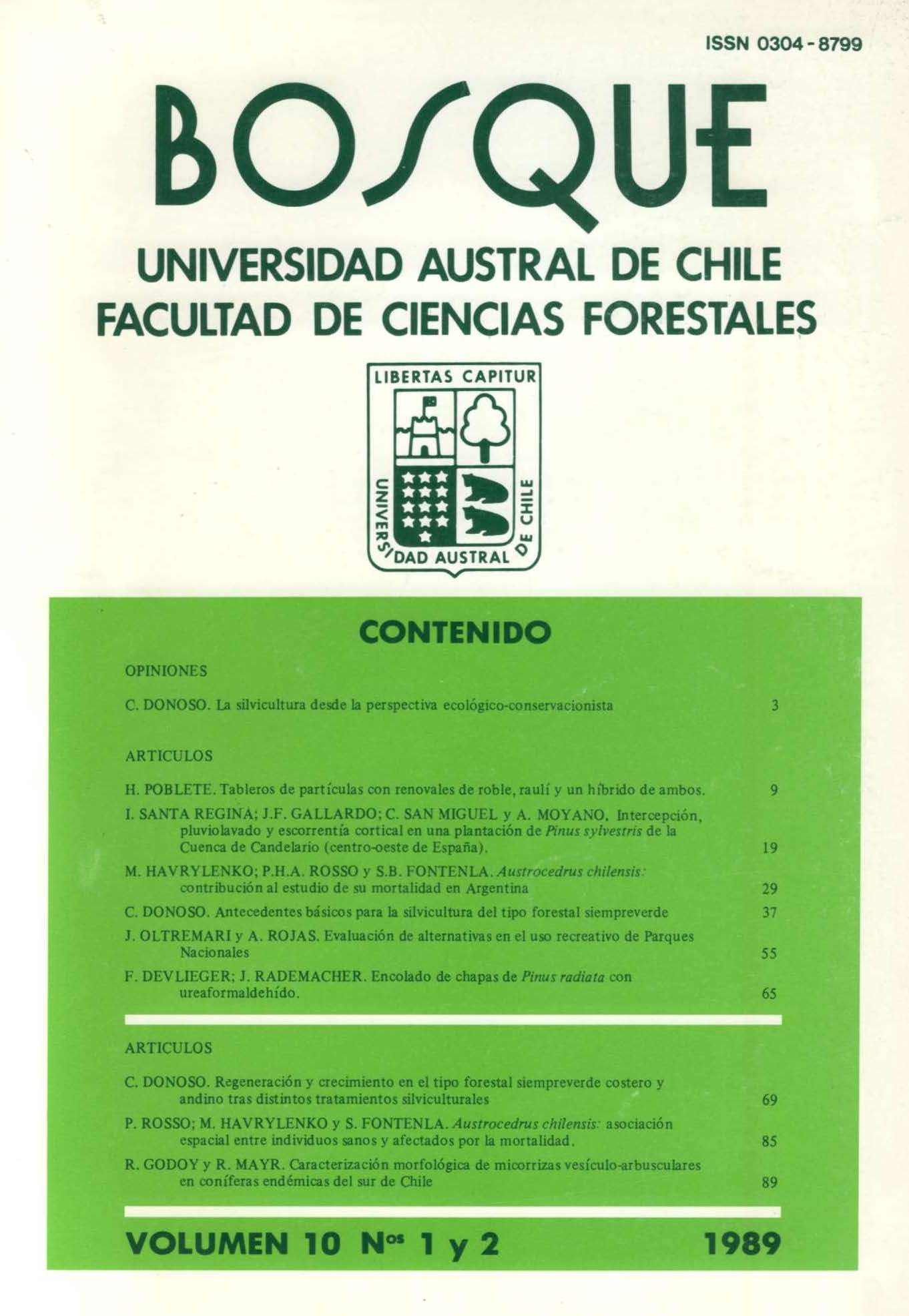Silvics of the evergreen forest type
Main Article Content
Abstract
Because of economic and accesibility reasons the evergreen forest type (siempreverde) has been barely studied. Many studies related to species or stands or subtypes of the forest type have been performed during the last years; these studies have produced numerous reports and also some theses and journal papers. From those works the data that constitute this paper has been synthesized as the foundation fo the silvics of the largest forest type of Chile, with 4.8 millions estimated hectares. The evergreeen forest type occurs over a broad latitudinal and altitudinal range, which goes together with an important variation of the environmental condition, including climate, topography and substrate. This great variation necessarily implies a similar floristic diversity, taking into account only forest trees, there are more than 21 forest species, which are mixed in various ways according to the environmental variation along their broad distribution. This characterization indicates that the evergreen forest type is a system of very different forest communities, and that any prescription related to its silviculture or management must refer to specific stands or conditions. Regeneration and forest dynamics studies, together with specific autoecologic studies, reflected a broad shade tolerance spectrum for the different species. Depending on the shade tolerances and regenerative strategies defined for the different species, the first and intermediate successional stages will take specific courses, according to the type of exploitation or natural alteration produced. Stand structure of the steady-state communities is characteristicaly uneven aged, and dominated by shade tolerant species in terms of density and frequency, and by shade intolerant emergent species in terms of basal area and tree height. Floristic composition of climax forests will vary as a function of environmental variation. In addition, the species present different cycles or periodicity of the annual seed production, which are very regular for some species, or irregular for others, at least for a collection period of 7 years. Seed size, weights and morphology are very variable, depending on the dissemination agent which is also related to shade tolerance and regenerative strategies of the species. Finally, germination capacity of the species vary from very low to very high percentages of germination, and most of the species require different cold and wet stratification for breaking off dormancy. This last characteristic is commonly related to the regenerative strategy of the species.

